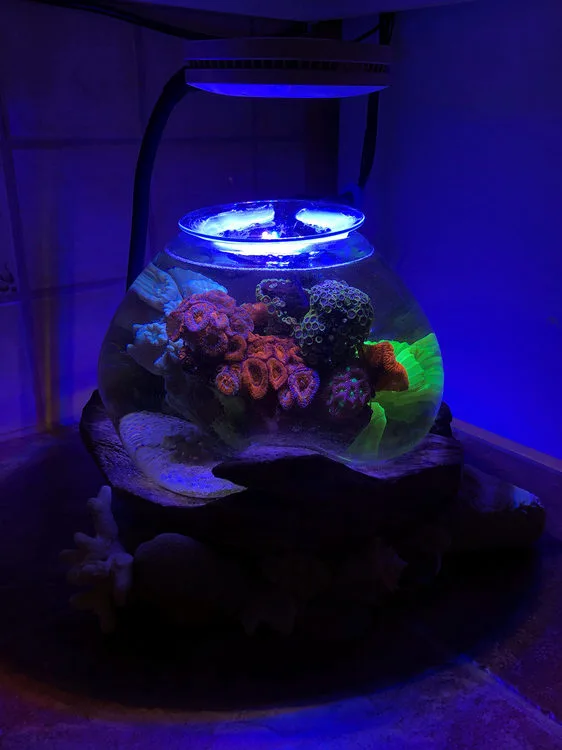Stunning 1-Gallon Reef Tank – GraniteReefer's TOTM | NanoReef

Tank Specifications
Volume: 1 Gallons / 6 Liters
Equipment List
- Salt: Red Sea
Frequently Asked Questions
How do I set up a pico reef tank like GraniteReefer's?
To set up a pico reef tank, start with a suitable container of 3 gallons or less, such as the 1.75-gallon handblown glass bowl used by GraniteReefer. Ensure proper filtration, using a lift pipe with an air pump for circulation. Include a heater, aquarium-safe silicone for sealing, and a suitable lid to minimize evaporation. Use quality dry rock like Pukani and a suitable substrate, such as Natures Ocean Samoa Pink.
What lighting schedule should I use for my reef tank?
A suitable lighting schedule for a reef tank is to have the lights on for 12-14 hours a day. GraniteReefer uses an AI Prime light with a schedule from 7 AM to 9 PM, which offers ample light while mimicking natural daylight cycles.
What is the best way to feed corals and fish in a pico reef?
Corals and fish can be fed by combining daily flake feed for the fish with a larger feeding ritual before water changes. Spot feed corals with products like Reef Roids during these larger feedings. Ensure you pay attention to the needs of both the fish and the corals to avoid overfeeding.
How do I perform water changes in a small reef tank?
Perform 100% water changes weekly for a pico reef. Prepare the new saltwater in a bucket and use gravity to drain and refill the tank. Use a turkey baster to stir and siphon the tank water while ensuring you scrub the glass and clean out detritus using proper tools like a toothbrush.
What salinity should I maintain in my reef tank?
Aim to maintain the specific gravity (SG) at 1.026, which is ideal for most reef tanks. GraniteReefer uses Red Sea Coral Pro salt mixed to this level, ensuring stability.
Do I need to test my water parameters regularly in a pico reef?
While regular testing isn’t necessary if you are doing weekly 100% water changes, it’s beneficial to check parameters occasionally. GraniteReefer tested alkalinity, noting significant weekly swings, but has not observed any related issues, indicating that this approach works for his setup.
What types of fish and invertebrates are suitable for a pico tank?
For a pico tank, consider adding small, peaceful fish like the Blackray Shrimp Goby and compatible invertebrates such as pistol shrimp, brittle starfish, and hardy snails like limpets. Be cautious with bioload, as pico tanks can easily become overloaded.
How can I manage pest populations in my reef tank?
To manage pest populations like Gammarid amphipods, adding a small fish that helps control their numbers is effective. Regular feeding will create a balanced nutrient input, which can help keep pest species in check.